Quick Look at Core M 5Y70 and Llama Mountain
by Joshua Ho on September 10, 2014 2:36 PM EST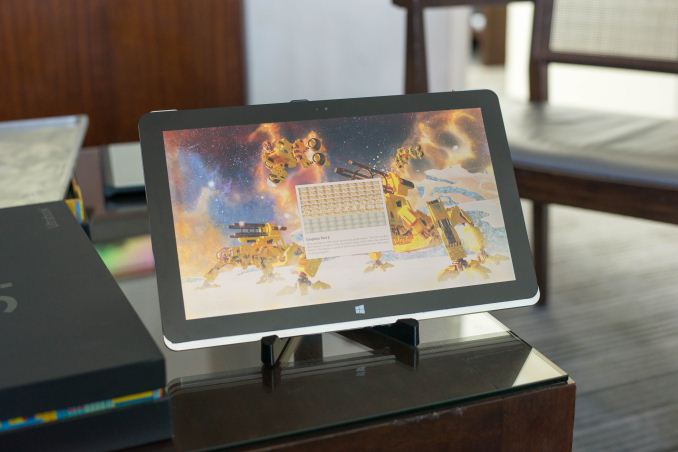
Today, Intel showed off a reference design codenamed Llama Mountain, which is an incredibly thin tablet running Intel's Core M 5Y70. While we've covered Core M previously it's worth going over again for those unfamiliar with this chip. For reference, it's the first shipping implementation of Broadwell and designed to target a 4.5W TDP. This means that it's fully possible to integrate a full Windows PC into a thin, fanless formfactor. We've already seen the announcement of the ThinkPad Helix 2 with Core M, so it's clear that this new chip can support such formfactors.
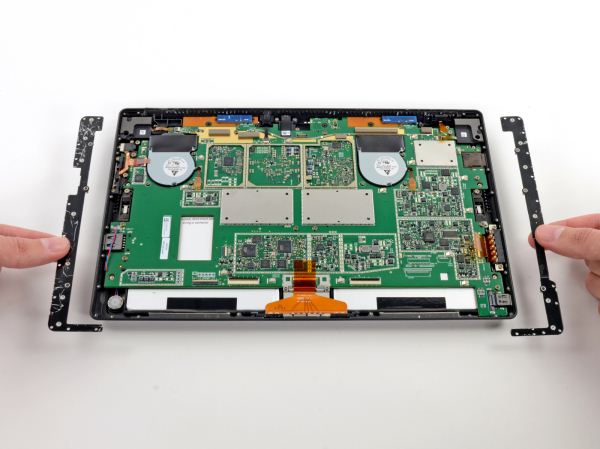
One of the biggest surprises for me was how much smaller the PCB was in Llama Mountain. For reference, the photo above is from our Surface Pro teardown. The PCB takes up almost the entirety of the tablet, and there's a great deal of extra thickness from the fans in the device. I managed to get a photo of the entire Llama Mountain board below. The second green PCB contains the storage (a SanDisk iSSD solution) and a WiFi chip (Intel 7260AC).
The resulting tablet is incredibly light at 684 grams. For reference, the iPad Air is 469 grams. Of course, the real question is whether the extra ~200 grams is worth it. To get an idea of whether or not it is, Intel showed the performance of Llama Mountain in Sunspider 1.0.2 and 3DMark Ice Storm Unlimited. I've put the results into the graphs below.
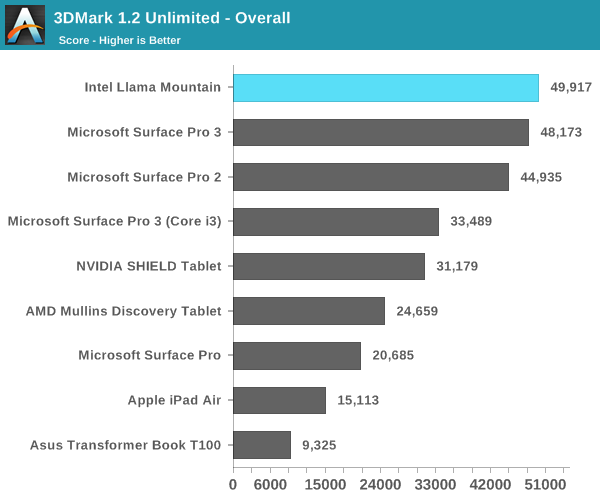
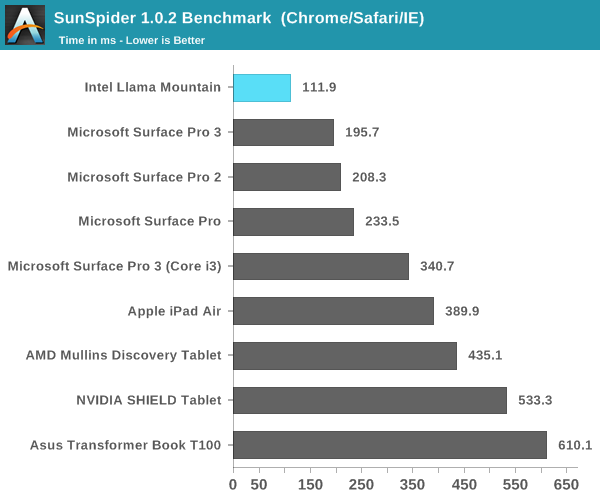
Needless to say, the Core M 5Y70 is the fastest tablet that we have test results for. The Surface Pro line has 15W TDP parts, while Core M operates in a 4.5W TDP. However, for this reference design Intel is leveraging the large amount of surface area to drive a 6W TDP. Despite this, it seems that it manages to equal or better the Surface Pro line in performance. Intel also emphasized that only an aluminum back cover would be needed to dissipate the heat to keep costs down. In fact, there were versions of Llama Mountain with copper and gold-plated back covers, but had no noticeable effect in performance. I'm definitely looking forward to future tablets and 2-in-1 devices launching with this chip, as this could enable laptop levels of performance in a tablet formfactor without the compromise we see now.



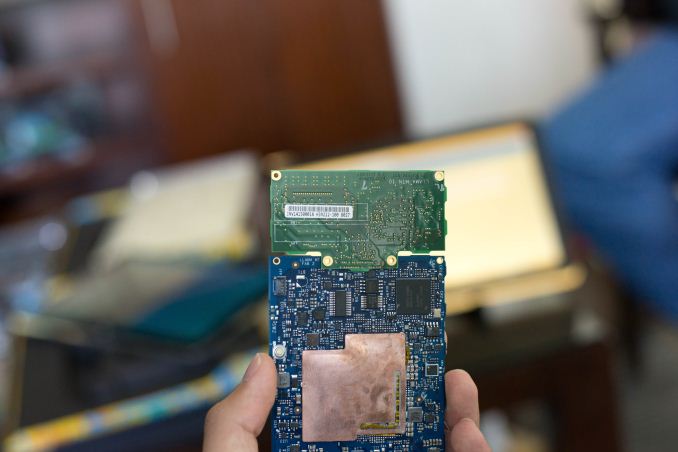
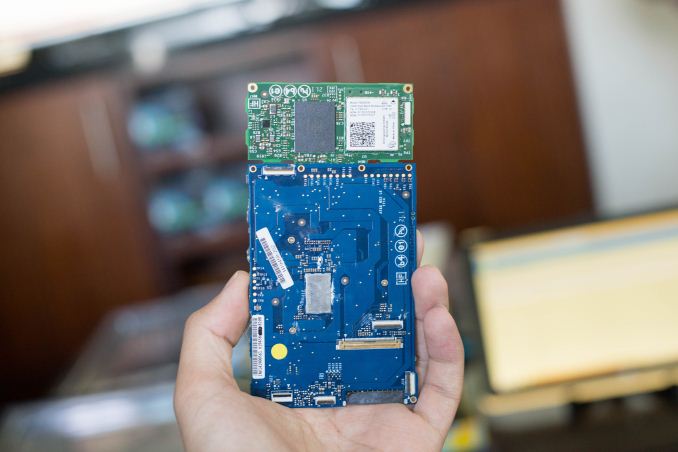








81 Comments
View All Comments
liahos1 - Wednesday, September 10, 2014 - link
are you going to be able to do a deeper benchmark analysis on the reference device?B3an - Wednesday, September 10, 2014 - link
This NEEDS to be in the Surface Pro 4 now...frostyfiredude - Wednesday, September 10, 2014 - link
So long as sustained performance isn't way lower than shown, this is def a huge win for Surface Pro. Similar performance to i5 SP3 at 1/3 the power use, awesome.mkozakewich - Wednesday, September 10, 2014 - link
If it was, I imagine they'd just keep their current fan-cooled chassis. Still, the TDP is 5 Watts. At full power, it would only display a third of the heat.craighamilton - Saturday, December 6, 2014 - link
There are a number of higher rated phones, I recommend seeing http://www.topreport.org/tablets/ among others.nofumble62 - Thursday, September 11, 2014 - link
No, these chips must go in the Macbook Air first.Wolfpup - Monday, September 29, 2014 - link
Eh. I'm SUPER excited about a potential Surface Pro that's fanless. Frankly right now I wish there was an Atom model, as I love everything about the Surface Pro 3 save that I don't want a fan since I'll be using it heavily as an ereader.I think 2nd gen Atom already has the performance I need...but hey, I'll take a 4.5-6 watt chip with the performance of a 15 watt Haswell!
Spunjji - Monday, November 10, 2014 - link
Late reply... but FYI, the Surface Pro 3 fan doesn't engage when you're using it that lightly.halo37253 - Monday, November 3, 2014 - link
Lame. Unless you just want to check your facebook.Honestly Would like to see a Windows Convertible laptop/tablet with one of these chips. Though even a new Surface Pro using one would be nice. Though I hope the keep the fans, and give the machines less chance of throttling. Would be great during those long Civ 5 matches.
Stochastic - Wednesday, September 10, 2014 - link
Would this enable an even thinner/lighter Surface Pro 4? Or perhaps they could retain the same chassis but have the benefit of reduced thermal throttling.